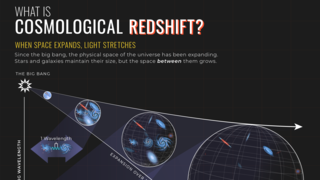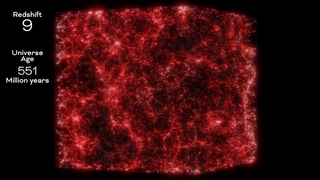Universe
ID: 14074
The Nancy Grace Roman Space Telescope's Wide Field Instrument will use a special tiling pattern to perform its high latitude spectroscopic survey. Roman starts with a single image "footprint" produced by its 18-detector array and then takes a second image slightly offset to cover the small gaps between the individual detectors. It repeats this process eight more times to create a mosaic covering about 2.5 square degrees of sky. Roman then creates the same mosaic, angled slightly, overlapping the first, and then two more times rotated about 180 degrees. These four passes, similar to taking a longer exposure, give better sensitivity and more precise measurements.
In current plans, Roman’s spectroscopy survey will cover nearly 2,000 square degrees, or about 5% of the sky, in just over seven months. The team’s results showed that the survey should reveal precise distances for 10 million galaxies from when the universe was between about 3-6 billion years old, since light that reaches the telescope began its journey when the universe was much younger.
The Roman Space Telescope's High Latitude Survey Pointing Scheme
In current plans, Roman’s spectroscopy survey will cover nearly 2,000 square degrees, or about 5% of the sky, in just over seven months. The team’s results showed that the survey should reveal precise distances for 10 million galaxies from when the universe was between about 3-6 billion years old, since light that reaches the telescope began its journey when the universe was much younger.
Related
For More Information
Credits
Scott Wiessinger (KBR Wyle Services, LLC): Producer
Ashley Balzer (ADNET Systems, Inc.): Science Writer
Claire Andreoli (NASA/GSFC): Public Affairs Officer
Yun Wang (Caltech/IPAC): Scientist
Ashley Balzer (ADNET Systems, Inc.): Science Writer
Claire Andreoli (NASA/GSFC): Public Affairs Officer
Yun Wang (Caltech/IPAC): Scientist
Please give credit for this item to:
NASA's Goddard Space Flight Center
NASA's Goddard Space Flight Center
Short URL to share this page:
https://svs.gsfc.nasa.gov/14074
Mission:
Nancy Grace Roman Space Telescope
This item is part of these series:
Astrophysics Visualizations
Astrophysics Animations
Astrophysics Stills
Keywords:
SVS >> Galaxy
SVS >> Astrophysics
SVS >> Redshift
NASA Science >> Universe
SVS >> Nancy Grace Roman Space Telescope
https://svs.gsfc.nasa.gov/14074
Mission:
Nancy Grace Roman Space Telescope
This item is part of these series:
Astrophysics Visualizations
Astrophysics Animations
Astrophysics Stills
Keywords:
SVS >> Galaxy
SVS >> Astrophysics
SVS >> Redshift
NASA Science >> Universe
SVS >> Nancy Grace Roman Space Telescope













